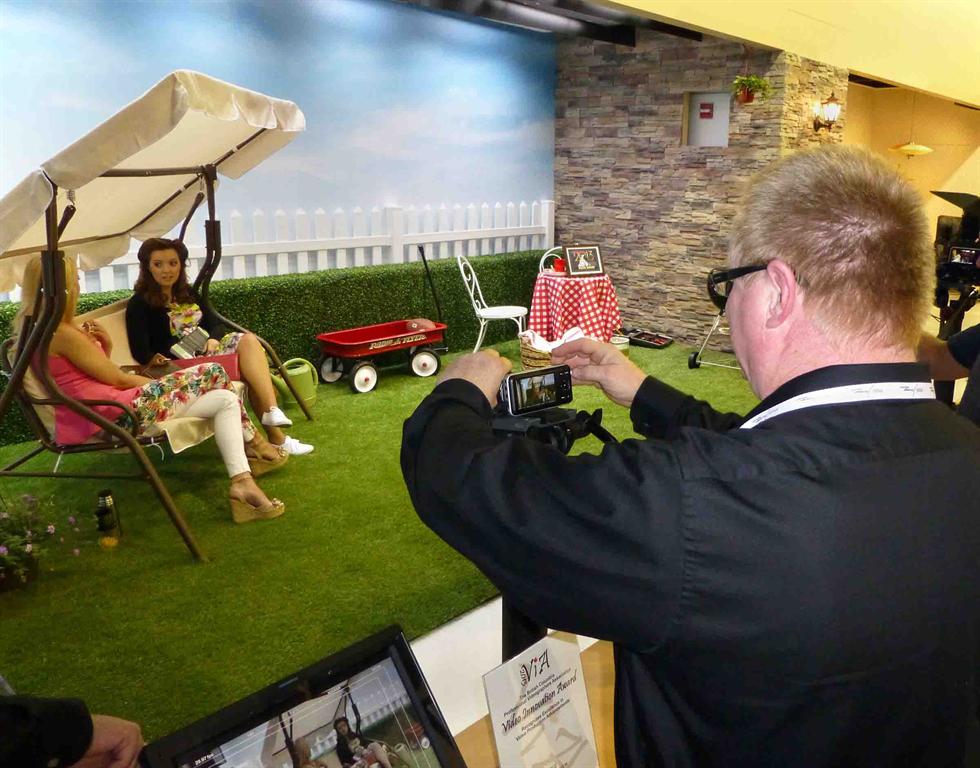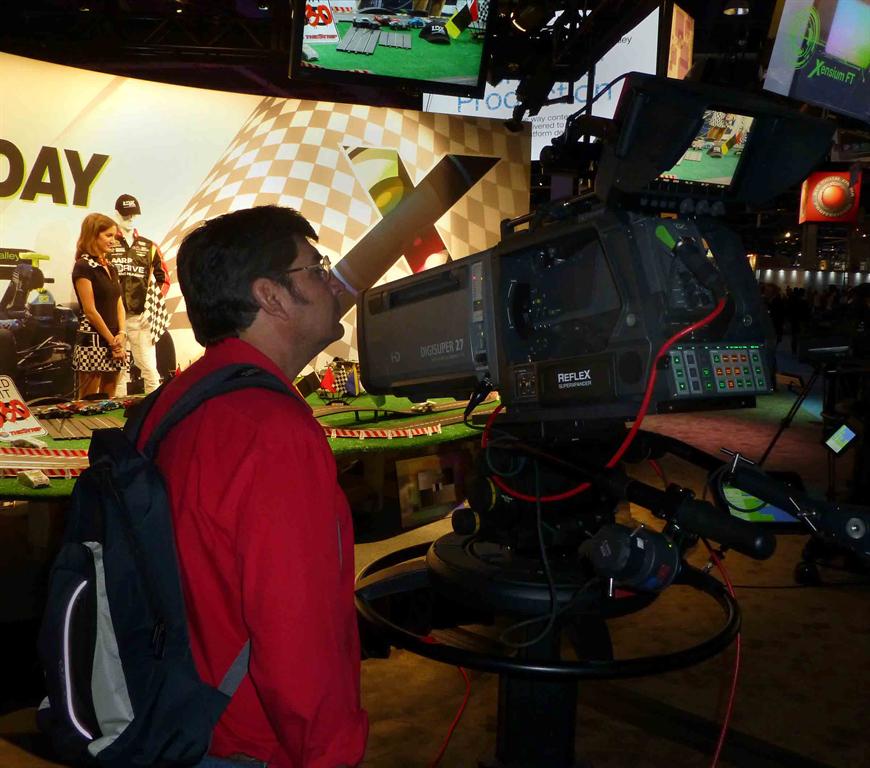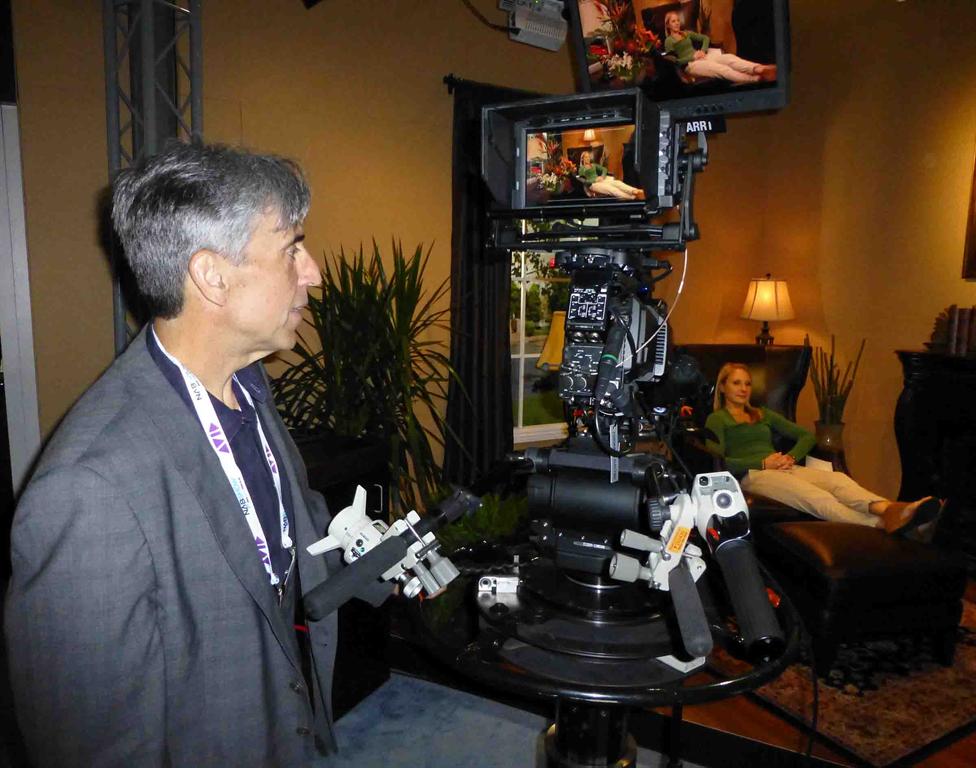2013 NAB Product Review: Cameras

Mark Huss of PSSI Global takes a closer look at the Blackmagic Design Pocket Cinema Camera. 4K imaging was certainly on the minds of many of the camera makers displaying at NAB Show. There was also integration of Wi-Fi and bonded cellular connectivity into camcorders. And the high-speed cameras inched up their frames-per-second, as they do year after year.
ARRI introduced the Alexa XT, XT M, XT Plus and XT Studio cameras, replacing all of the previous models of except for the original Alexa. Owners of existing Alexa cameras can purchase individual upgrades that deliver some of the key features of the Alexa XT.All XT models come with the new XR Module (extended recording), a side panel that was co-developed with Codex and replaces the previous SxS module.
Blackmagic Design premiered two new digital cinema cameras: the Blackmagic Production Camera 4K and the Blackmagic Pocket Cinema Camera. The Production Camera 4K has a Super35mm sensor, global shutter and 4K recording in compressed CinemaDNG RAW. It provides 12 stops of dynamic range, touch-screen metadata entry and a built-in SSD recorder. The Blackmagic Pocket Cinema Camera utilizes a Super 16mm-sized image sensor, an active Micro Four Thirds lens mount, 13 stops of dynamic range and lossless CinemaDNG RAW and Apple ProRes 422 (HQ) recording to an SD memory card.
Canon introduced a pair of entry-level HDSLR camcorders, the XA20 and XA25. The two camcorders have 20x zoom lenses, optical and electronic image stabilization, can record in both AVCHD and MP4 codecs simultaneously, and can shoot in the dark using a built-in infrared emitter for illumination. They are capable of 1080/60p imaging, and the XA25 also features an HDSDI output for external recording in 4:2:2.
Juan Valda of Red Uno De in Bolivia, examines the Grass Valley LDX Premiere camera. For-A showcased its FT-ONE high-speed camera, capable of capturing 4K images at up to 900 frames per second. It utilizes the FT1-CMOS, a global shutter CMOS color sensor. Images are captured as uncompressed raw data on the system’s internal RAM memory, which holds 8.5 seconds, and then can be transferred to optional, hot-swappable internal SSD cartridges.
GoPro introduced its HERO3 Black Edition, half the size of its predecessor, with a 2.7K imager and integrated Wi-Fi to provide for remote control of the camera and to monitor what the camera is imaging. It is capable of 1080 at 60fps or 720 at 120fps for slow-motion shooting.
Grass Valley introduced its LDX Flex studio camera system as an entry-level offering to its LDX series of upgradable system cameras. Designed as a cost-effective acquisition camera for news/talk, corporate, educational, studio and small mobile truck environments, the LDX Flex can be upgraded through the entire LDX range of LDX Première, LDX Elite and LDX WorldCam, either on a one-time-only basis or permanently.
Hitachi Kokusai Electric America unveiled its SK-HD2200 full-body HD production camera, a top-of-the line studio and OB camera with new 2/3-inch, 1080/60p, progressively scanned, (Ultra-Advanced) UAIT-CCDs, 1,100TVL resolution and 3 Gbps HD-SDI signal handling from end-to-end. That full-bodied model is complemented by the portable, handheld version, the SK-HD1200, with the same performance. Also new from Hitachi is its Z-HD6000 CMOS studio camera, which includes new 2/3-inch CMOS camera imagers.


George Epley of Viacom Media checks out the Ikegami HDK-97 Arri Super35 camera.Ikegami introduced the HDK-97ARRI broadcast-style production camera utilizing a large-format sensor. Jointly developed with ARRI, it provides wide dynamic range and other attributes of a large single-sensor camera in a form factor familiar to OB crews. Ike also showed its HDK-55 16-bit full-digital HDTV portable camcorder and its HDK-97C digital 3G HDTV portable CMOS camera system.
JVC introduced a firmware upgrade (v2.0) to its GY-HM650 handheld camera. In addition to the camera’s original built-in Wi-Fi and FTP capabilities, the upgrade allows connection to a Verizon 4G LTE modem via the camera’s USB port. That configuration enables the GY-HM650 to transmit footage to a broadcast facility in real time with no add-on boxes or backpacks required. Simultaneously the camera can record a full HD file to solid-state memory cards.
Nikon premiered its D7100 DX format DSLR, with a 24.1MP imager capable of imaging 1080p at 24, 25 and 30fps, and 720P at 60fps. It features onboard recording and HDMI output, and has a 51-point autofocus system.
Paul Levitt of Carfax Studios gets a close look at Panasonic's AJ-PX5000 camera Panasonic introduced the AJ-PX5000G, the company’s first camcorder designed around the company’s new AVC-ULTRA chip. It features built-in microP2 card slots and the company’s 2/3-inch, 2.2M 3-MOS imagers. It provides 720p and 1080p/i recording, and is Panasonic’s first P2 camcorder that will record in full-resolution, 10-bit 1080/60p (in AVC-Intra100). The company also premiered a third-generation model of its VariCam, with upgrades to the camera’s signature features and incorporating the company’s new AVC-ULTRA video codecs.
RED is moving beyond 4K to 6K with the debut of its RED DRAGON for RED EPIC at the show. RED DRAGON shoots in 6K resolution at 100 fps with impressive native dynamic range. The RED DRAGON sensor translates to nine times more resolution than HD and more than 19 megapixels. RED EPIC and SCARLET owners will be able to upgrade their existing sensors to RED DRAGON. RED also launched its REDlink family of wireless products, including the Meizler Module, REDSync Master, REDlink Wireless Receivers and the REDSync App. They all allow the wireless transmission of video, audio, and timecode, all controlled from an iOS app.
Sony introduced its PMW-400 XAVC-ready camcorder, an economic model featuring three-2/3-inch Exmor CMOS sensors and support for a wide range of file formats and workflows. A new version of Sony’s lightweight PMW-500 2/3-inch 3x PowerHAD FX CCD sensor camcorder allows connection with Apple iPads or Android mobile devices to benefit from XMPilot operation. And at its press event, Sony showed off some concept 4K DSLR-type cameras, though as prototypes only and without any specifics.
Vision Research unveiled its Phantom Flex4K, its first professional cinema camera designed to capture normal frame rates and high speed up to 1,000 fps at 4K resolution. The capture, playback and save parameters can be set from the built-in menu on the right side of the camera body, which makes external control of the camera unnecessary. The finished camera will be released later in the year.

The professional video industry's #1 source for news, trends and product and tech information. Sign up below.
